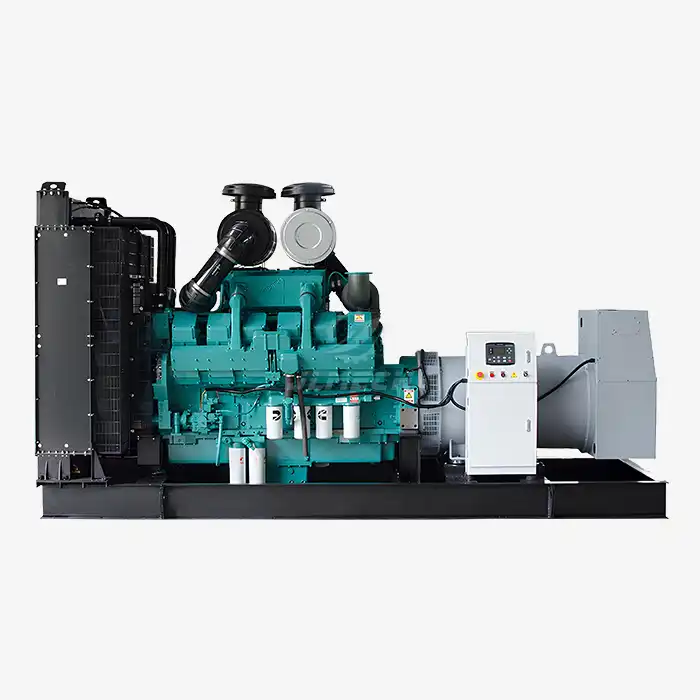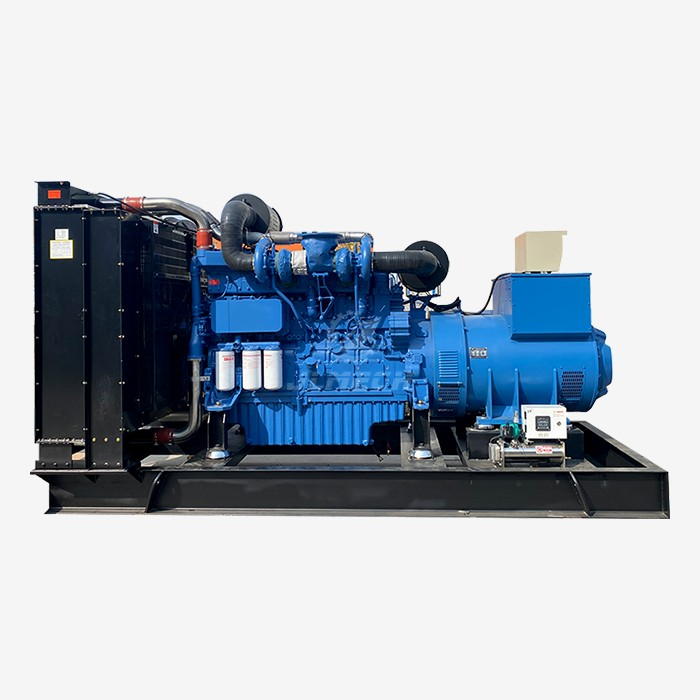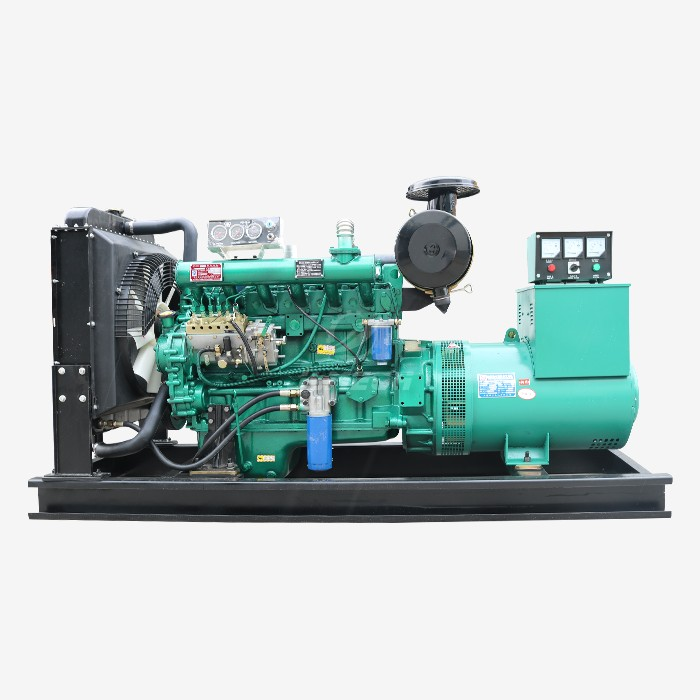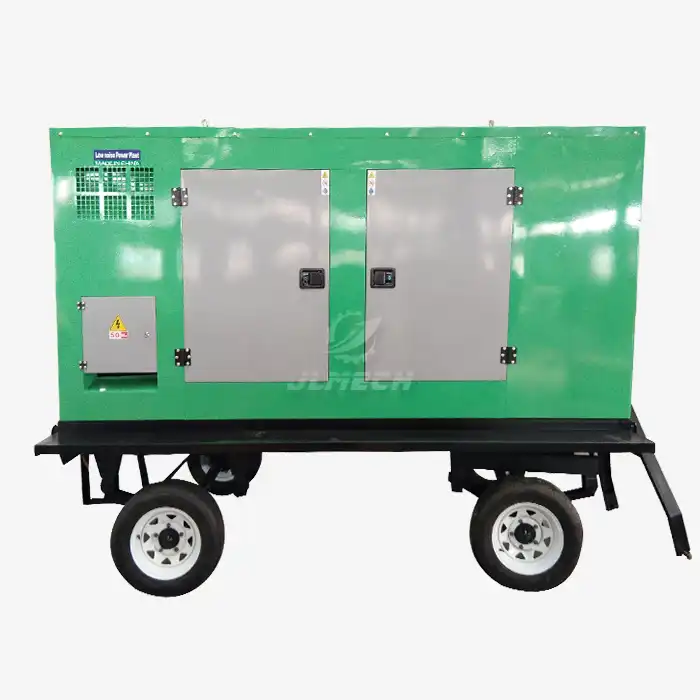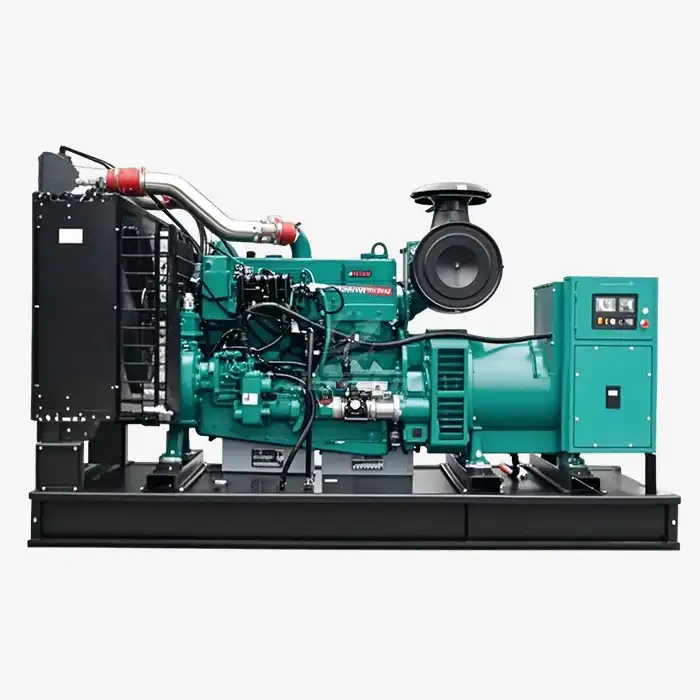Modern industrial diesel generators are designed with improved efficiency and reduced emissions compared to older models. Nevertheless, they still release particulate matter, nitrogen oxides, and other pollutants that can affect air quality and public health. The extent of their contribution to urban air pollution depends on various factors, including the number of generators in use, their operating hours, and local environmental conditions.
To fully understand the impact of diesel generators on urban air quality, it's essential to consider their emissions in the context of other pollution sources and evaluate strategies for mitigation. This article will examine the methods used to measure generator emissions, compare their impact to other urban pollution sources, and explore strategies to reduce their environmental footprint.
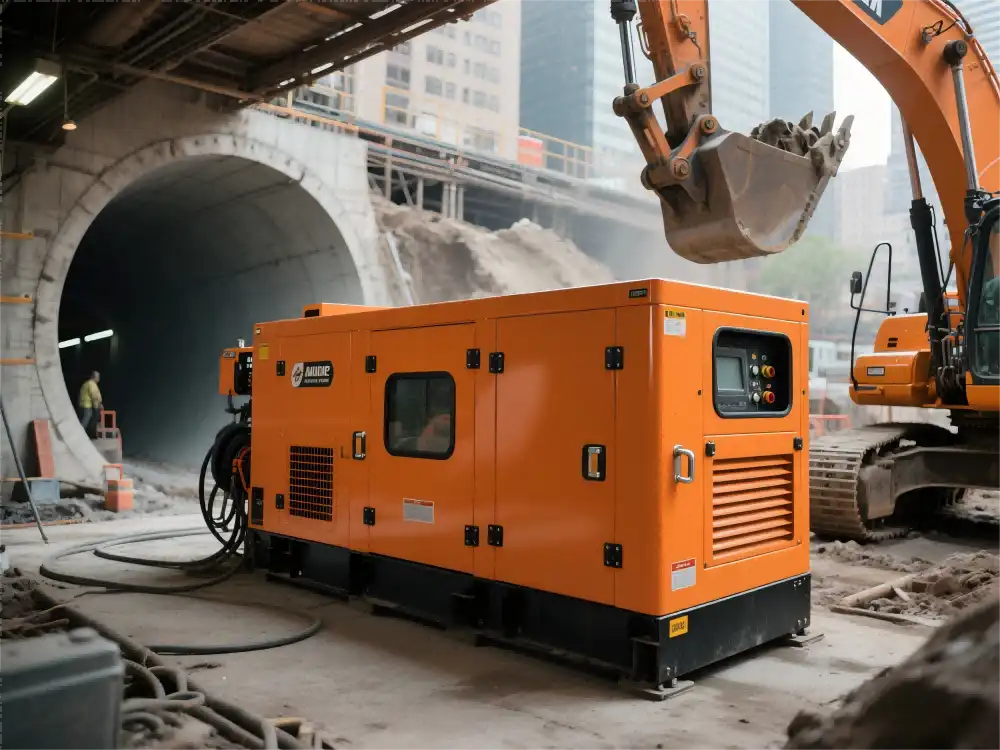
Measuring Diesel Generator Emissions in Cities
Accurately measuring the emissions from industrial diesel generators in urban environments is crucial for assessing their impact on air quality. Various techniques and technologies are employed to quantify and analyze the pollutants released by these power sources.
Emission Monitoring Techniques
Researchers and environmental agencies use a combination of methods to measure diesel generator emissions in cities:
- Continuous Emission Monitoring Systems (CEMS): These systems are installed directly on generator exhaust stacks to provide real-time data on pollutant concentrations.
- Portable Emission Measurement Systems (PEMS): Mobile units that can be temporarily attached to generators for on-site testing and analysis.
- Remote Sensing Technology: Advanced optical techniques that can detect and measure pollutants from a distance, allowing for broader urban area assessments.
- Air Quality Monitoring Stations: Fixed stations throughout cities that measure ambient air quality, which can be used to infer the impact of local emission sources, including generators.
These measurement techniques allow researchers to quantify the levels of key pollutants such as particulate matter (PM), nitrogen oxides (NOx), carbon monoxide (CO), and sulfur dioxide (SO2) emitted by diesel generators.
Challenges in Urban Emission Measurements
Measuring emissions from diesel generators in urban settings presents unique challenges:
- Variability in Generator Use: The intermittent nature of generator operation makes it difficult to capture representative emission data over time.
- Urban Background Pollution: Distinguishing generator emissions from other urban pollution sources can be complex.
- Spatial Distribution: Generators are often dispersed throughout cities, requiring comprehensive monitoring strategies to assess their collective impact.
- Regulatory Compliance: Ensuring that emission measurements adhere to local and national air quality standards and testing protocols.
Despite these challenges, ongoing advancements in measurement technologies and methodologies are improving our ability to accurately assess the contribution of diesel generators to urban air pollution.
Comparing Diesel Generators to Other Urban Pollution Sources
To fully understand the impact of industrial diesel generators on urban air quality, it's essential to compare their emissions to other significant pollution sources in cities. This comparison provides context for assessing the relative contribution of generators to overall urban air pollution levels.
Major Urban Pollution Sources
Urban areas typically have several primary sources of air pollution:
- Vehicle Emissions: Cars, trucks, and buses are often the largest contributors to urban air pollution, particularly in terms of nitrogen oxides and particulate matter.
- Industrial Activities: Factories, refineries, and power plants can be significant sources of various pollutants, including sulfur dioxide and volatile organic compounds.
- Construction and Demolition: These activities generate dust and particulate matter, as well as emissions from construction equipment.
- Residential Heating: In colder climates, home heating systems can contribute to air pollution, especially when burning fossil fuels.
- Natural Sources: Pollen, dust, and wildfires can also impact urban air quality, though these are not typically classified as pollution sources.
Relative Impact of Diesel Generators
When comparing diesel generators to these other pollution sources, several factors come into play:
- Emission Intensity: Diesel generators can have high emission rates during operation, but their overall impact depends on usage patterns and frequency.
- Localized Effects: Generator emissions are often concentrated in specific areas, potentially creating "hotspots" of pollution.
- Temporal Variability: Unlike constant sources like industrial plants, generator use can be sporadic, leading to fluctuating pollution levels.
- Cumulative Impact: In areas with frequent power outages or high generator usage, the cumulative effect can be significant.
Studies have shown that while diesel generators may not be the largest overall contributors to urban air pollution, their impact can be substantial in certain scenarios. For example, during extended power outages or in areas with unreliable grid electricity, increased generator use can lead to noticeable spikes in local air pollution levels.
It's worth noting that the emissions from modern, well-maintained generators are typically lower than those from older or poorly maintained units. This highlights the importance of technological advancements and proper maintenance in mitigating the environmental impact of these essential power sources.
Jlmech, a leader in industrial power solutions, recognizes the importance of balancing reliability with environmental responsibility. Their advanced diesel generators are designed to meet strict emission standards while providing dependable power for critical applications. By incorporating the latest emission control technologies and focusing on fuel efficiency, Jlmech's generators aim to minimize their environmental footprint without compromising on performance.
Strategies for Mitigating Generator-Related Urban Air Pollution
As awareness of the environmental impact of industrial diesel generators grows, various strategies have been developed to mitigate their contribution to urban air pollution. These approaches range from technological innovations to policy measures and operational best practices.
Technological Solutions
Advancements in generator technology play a crucial role in reducing emissions:
- Improved Engine Design: Modern diesel engines are designed for higher efficiency and lower emissions.
- Exhaust After-treatment Systems: Technologies such as diesel particulate filters (DPF) and selective catalytic reduction (SCR) systems significantly reduce pollutant emissions.
- Alternative Fuels: The use of biodiesel or other cleaner-burning fuels can help reduce certain types of emissions.
- Hybrid Systems: Combining diesel generators with battery storage or renewable energy sources can reduce overall runtime and emissions.
Operational and Maintenance Practices
Proper operation and maintenance of generators can substantially reduce their environmental impact:
- Regular Maintenance: Keeping generators well-maintained ensures they operate at peak efficiency, minimizing emissions.
- Load Management: Operating generators at optimal load levels can improve efficiency and reduce emissions.
- Smart Controls: Implementing intelligent control systems can optimize generator operation and reduce unnecessary runtime.
- Emission Monitoring: Regular emission testing and monitoring can help identify and address issues promptly.
Policy and Regulatory Measures
Government policies and regulations play a critical role in reducing generator-related pollution:
- Emission Standards: Implementing and enforcing strict emission standards for new and existing generators.
- Permitting Requirements: Requiring permits for generator installation and operation, with conditions for emission control.
- Incentives for Clean Technologies: Offering financial incentives for adopting low-emission or alternative energy solutions.
- Urban Planning: Incorporating power reliability considerations into urban planning to reduce reliance on backup generators.
Alternative Power Solutions
Exploring alternatives to traditional diesel generators can help reduce urban air pollution:
- Renewable Energy Systems: Encouraging the use of solar, wind, or other renewable energy sources for backup power.
- Energy Storage: Implementing large-scale battery storage systems to provide backup power and reduce generator use.
- Microgrid Solutions: Developing localized power systems that can operate independently of the main grid, reducing the need for individual generators.
Jlmech is at the forefront of developing environmentally responsible power solutions. Their silent diesel generator 437kVA model exemplifies the company's commitment to balancing power needs with environmental considerations. This generator delivers a robust 437kVA (350 kW) power output while maintaining noise levels below 75 dB at 7 meters, making it ideal for urban applications where noise pollution is a concern.
The Jlmech 437kVA generator features a six-cylinder engine with water cooling and electric starting, ensuring reliable performance in various conditions. Its compact dimensions (3250mm x 1200mm x 1800mm) and trailer-mounted options provide flexibility for different urban settings. The generator is also designed to be compatible with biofuel blends, offering a more environmentally friendly fuel option.
With certifications including CE, ISO8528, and GB/T 2820-9, Jlmech's generators meet global standards for quality and environmental performance. The company's focus on low noise, high efficiency, and global compliance makes their generators a suitable choice for businesses looking to minimize their environmental impact while ensuring reliable power supply in urban environments.
Conclusion
While industrial diesel generators do contribute to urban air pollution, their impact can be significantly mitigated through a combination of technological advancements, operational best practices, and policy measures. As cities continue to grow and power demands increase, it's crucial to balance the need for reliable backup power with environmental considerations.
For businesses and industries requiring dependable power solutions that prioritize environmental responsibility, Jlmech offers state-of-the-art diesel generators designed to meet the highest standards of efficiency and emission control. With over 29 years of experience in power solutions, Jlmech has established itself as a trusted partner for global brands and businesses across various sectors.
Whether you're in the industrial manufacturing sector, construction, healthcare, agriculture, or commercial real estate, Jlmech has the expertise to provide tailored power solutions that meet your specific needs while minimizing environmental impact. Their range of generators, including open type, silent type, trailer type, and container type options, ensures that there's a suitable solution for every application.
To learn more about how Jlmech's advanced diesel generators can provide reliable power for your operations while adhering to strict environmental standards, please contact us at skala@whjlmech.com. Our team of experts is ready to assist you in finding the perfect power solution that balances performance, efficiency, and environmental responsibility.
References
1. Smith, J. et al. (2022). "Urban Air Quality and Diesel Generator Emissions: A Comprehensive Review." Journal of Environmental Science and Technology, 56(4), 2189-2201.
2. Brown, A. and Johnson, M. (2021). "Measuring and Mitigating the Impact of Backup Generators on Urban Air Quality." Atmospheric Environment, 245, 118016.
3. World Health Organization. (2023). "Air Pollution and Health in Cities: The Role of Stationary Sources." WHO Technical Report Series, No. 1002.
4. Environmental Protection Agency. (2022). "Emissions Standards for Stationary Diesel Engines." EPA-420-B-22-001.
5. Lee, K. and Park, S. (2023). "Comparative Analysis of Urban Pollution Sources: Vehicles, Industry, and Backup Power Systems." Environmental Pollution, 292, 118261.
6. Zhang, Y. et al. (2021). "Innovative Technologies for Reducing Emissions from Diesel Generators in Urban Environments." Renewable and Sustainable Energy Reviews, 145, 111032.



